A couple of days every week a phenomenon overwhelms even the most hardened Florentine. It is know to some as the “boat people” scrooge. It happens on the days when gigantic cruise ships dock at Livorno. Thousands of pastel-clad tourists shod in flip-flops are unloaded and stuffed into dozens of buses, which transport them to Florence for eight hours of hot, humid sightseeing. They are herded from the Academia to the Uffizi to the Duomo, then through Piazza Signoria and across the Ponte Vecchio.
To escape the armies of sweating, sore-footed deck-crawlers, the wise visitor to Florence will decide on a Bardini Day – a morning in the cool blue-walled confines of the Palazzo Bardini (Museo Stefano Bardini), a lunch in the Bardini Garden(Il Giardino Bardini), and a late afternoon in the hill-topping Villa Bardini.
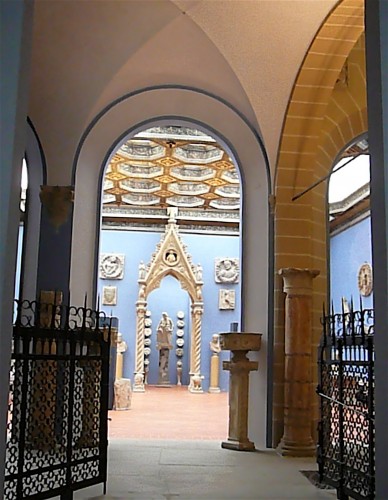
Palazzo Bardini
The faithful reader of Tuscan Traveler already knows a bit about the Stefano Bardini Museum near the Arno so there is no need to repeat it all again, except to say that on September 6 and September 13, at 11am, free English language tours are being offered of the Bardini Museum by Con gli Occhi di … And to repeat that the museum is almost always empty so it is soothing to wander through Stefano Bardini’s stuff before emerging into the noonday sun turning left to Borgo San Niccolo’ and then right to the entrance of the Bardini Gardens. (One caveat: To complete a full Bardini Day, it must be done on Saturday, Sunday or Monday because these are the only days the Museo Bardini is open.)
Bardini Garden
The Bardini Garden, unlike its popular well-worn cousin, the Boboli (a ticket to one gets the visitor into the other), is practically empty at all times. It is spread over almost ten acres, set on a 70 meter slope – the view from the top is panoramic. (The garden is open seven days a week from 8:30am to 6:30pm, so a Bardini Day can start here.)
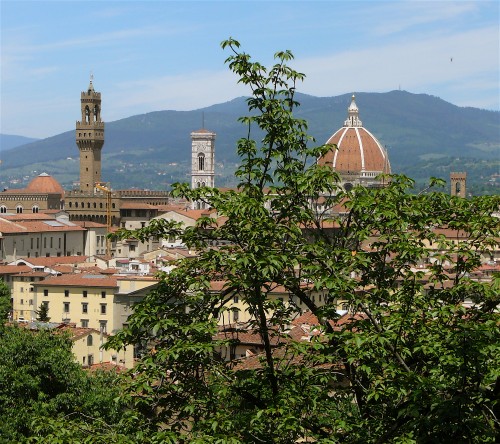
Although it is named for the last owner, Stefano Bardini, throughout the centuries the garden has had several owners, predominantely the Mozzi family, who owned the property and the palazzo at its base off and on from the 13th century to the 1880s. The garden is now state-owned property, as a result of a testamentary donation by Ugo Bardini, Stefano’s son, in the 1960s. It was then abandoned for over 40 years. Restoration started in 1998 and it opened to the public in 2005.
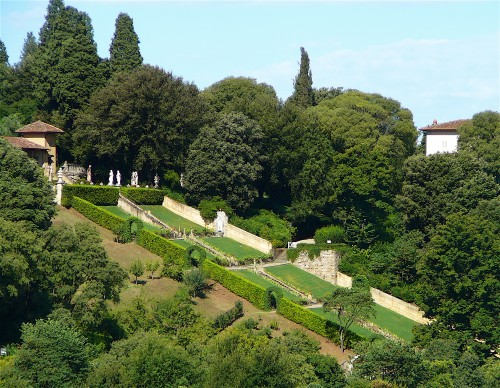
The garden is divided into three sections: 1) English wood in the west; 2) the baroque staircase in the center; and 3) the agricultural part in the east. Each part has its own history and a richness of components, among which water and sculpture play an essential role. Secluded pathways, grand vistas, flowering arbors, shaded benches and a high loggia, allow the visitor to create their own personal experience in the garden.
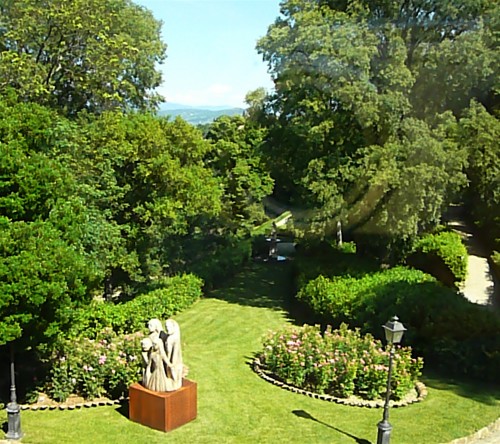
The loggia, with its spectacular view of the historic center of Florence, the cathedral dome, and the Arno River, is the perfect place for an hour or two respite. Lunch, aperitivi, as well as coffee and sweets are offered. On the perfect Bardini Day, one should plan to arrive at the loggia around 1pm to be refreshed and restored before going on to the Villa Bardini, only a couple of minutes away from the café.
Villa Bardini
Villa Bardini stands at the top of the garden and opens on to Costa San Giorgio, just up the street from where Galileo lived. The original 14th century villa was restructured and enlarged in the 17th century by the architect Gherardo Silvani for his friend Francesco Manadori (it was previously known as Villa Manadora or as Villa Belvedere, because of its magnificent view). It was later acquired by Stefano Bardini, who further enlarged it and the surrounding gardens. Bardini also added the loggia and a limonaia (greenhouse for citrus trees).
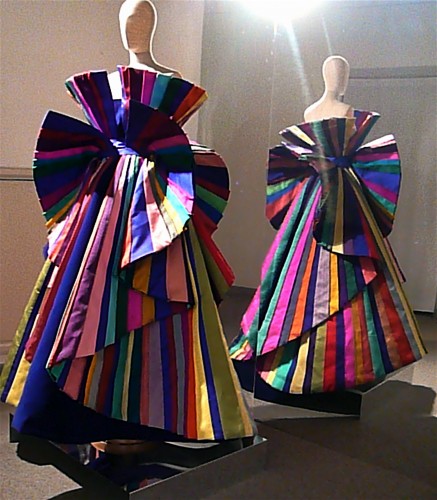
Abandoned for years, the villa, which once contained even more of the antique collections of Bardini, has been restored and transformed into a cultural center to host exhibitions, concerts, conventions and conferences,. It incorporates two new museums: the Roberto Capucci Museum containing many of the famous designer’s sculptural ball gowns and elegant party dresses); and the Pietro Annigoni Museum, dedicated to this contemporary painter, whose work was inspired by the great artists of the Renaissance.
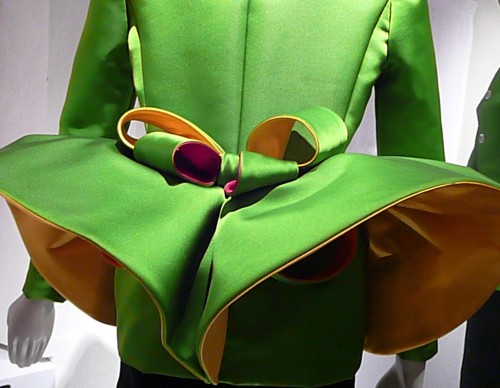
Until October 17, 2010, the Villa Bardini is also hosting a temporary exhibit that is associated with the Caravaggio exhibits at the Pitt and the Uffizi – Caravaggio and Modernity.
